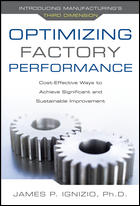Playing to Our Strengths
Often ignored in favor of improving weaknesses.

There’s a popular and effective exercise, taught in business schools everywhere, called a SWOT analysis. The concept is to analyze the entirety of a company, organization, or institution by listing its Strengths, Weaknesses, Opportunities, and Threats.
By recognizing where it excels, where it needs improvement, where its resources stand to make the largest impact, and where, what, and who could pose an obstacle to making that impact, anyone or anything can set itself on a path to success. Quite simply and intuitively, the key is to maximize strengths and opportunities while minimizing weaknesses and threats. In other words, play to your strengths and eliminate your weakness, or at least improve upon them. It’s even popular to say, “Turn your weaknesses into strengths.”
However, experts in human resources see this over-focus on improving weaknesses most evidently in employee performance reviews. According to a Harvard Business Review article titled, “How to Play to Your Strengths,” penned by Laura Morgan Roberts and a number of other authors:
“Most feedback accentuates the negative. During formal employee evaluations, discussions invariably focus on ‘opportunities for improvement,’ even if the overall evaluation is laudatory. Informally, the sting of criticism lasts longer than the balm of praise. Multiple studies have shown that people pay keen attention to negative information.”
While the authors recognize the usefulness and need for corrective feedback, they write, “Unfortunately, feedback that ferrets out flaws can lead otherwise talented managers to overinvest in shoring up or papering over their perceived weaknesses, or forcing themselves onto an ill-fitting template. Ironically, such a focus on problem areas prevents companies from reaping the best performance from its people.”
To further the point, the authors present a baseball analogy, asking, “Why should a natural third baseman labor to develop his skills as a right fielder?”
If a scout or manager was unable to recognize the skills of a natural third baseman in favor of ignoring that talent to fill a weakness in the lineup in right field, that manager would, at the least, be ignoring the strengths and opportunities that exist in using that player at third base.
Unfortunately, the opposite dilemma of focusing all your attention on your strengths can be perilous as well. To use another sports analogy, have you ever heard the term, “The best defense is a good offense?”
I mean, how many pro football teams have won the Super Bowl with a high-powered offense and no defense? Experts would tell you none. How many won with the opposite? Experts would tell you a few, but it’s rare.
As with football, baseball, or business, the key is balance, as a SWOT analysis suggests. If we simply just focus on one or the other this would be referred to as an SO analysis, or a WT analysis.
Many in the manufacturing sector have recognized America’s strength in large-scale manufacturing. The PrecisionPath Consortium, an industry-driven coalition, is bringing players in manufacturing and metrology to map “the technology requirements needed to advance aerospace, defense, energy, automotive and other industries producing large-scale, high accuracy parts and products.”
Find out more about these efforts in this month’s Quality article, “PrecisionPath Consortium Redefining Advanced Manufacturing.”
As always, enjoy and thanks for reading!
Looking for a reprint of this article?
From high-res PDFs to custom plaques, order your copy today!








